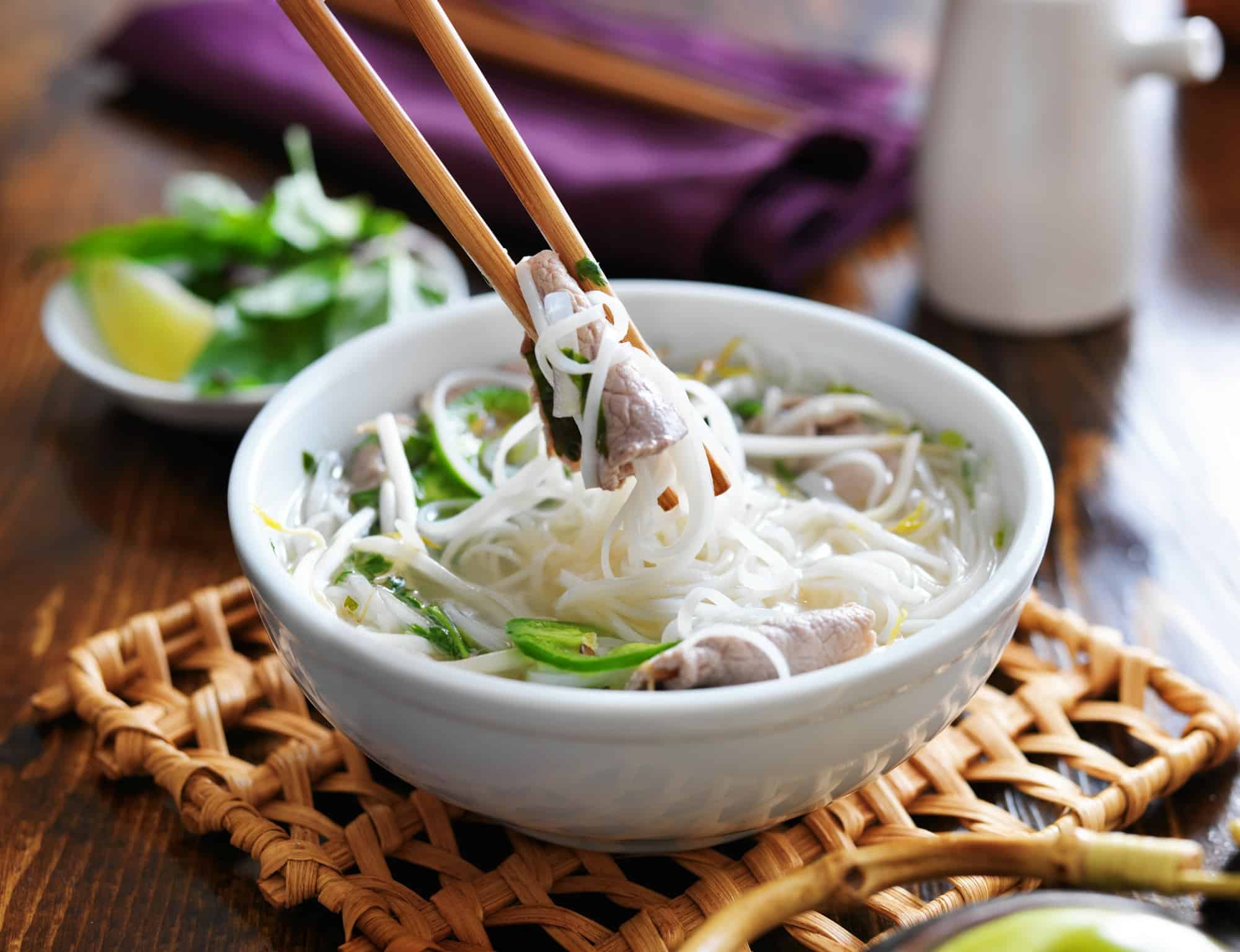How to Prepare a Delicate Vietnamese Pho with Beef and Fragrant Broth?

Vietnamese cuisine offers a cornucopia of flavors. It can transport you to the vibrant streets of Hanoi, the lush rice fields of Sapa, or the bustling markets of Ho Chi Minh City. Among the country’s culinary offerings, one dish stands out above the rest: pho. A cornerstone of Vietnamese food culture, pho is a steaming bowl of broth, rice noodles, and meat that manages to be both hearty and delicate, satisfying yet light. In this article, we will guide you through the process of preparing a classic pho with beef and a rich, fragrant broth.
The Power of the Broth
A well-prepared broth is at the heart of a good bowl of pho. The broth not only adds depth to the dish but also sets the stage for the noodles and beef. While you may be tempted to take shortcuts, the process of making the broth is not something to be rushed.
A lire également : What’s the Best Method for Creating a Zesty Lemon and Herb Grilled Chicken?
Start with good quality beef bones. These can be found in the meat department of your local supermarket or at a butcher’s shop. Rinse them under cold water to remove any traces of blood or grit, then place them in a large pot filled with water. Bring the water to a boil and let the bones simmer for about an hour.
While the bones are simmering, char an onion and a piece of ginger over an open flame. This adds a smoky flavor to the broth. Add these to the pot along with some spices like star anise, cloves, and cinnamon.
Sujet a lire : How to Make a Gourmet Crab Cake with a Crisp Panko Crust and Remoulade Sauce?
Let the broth simmer for a few hours, then strain it to get rid of any solids. You will be left with a flavorful broth that will serve as the base for your pho.
Achieving Perfectly Tender Beef
The choice of beef is also crucial in achieving the perfect bowl of pho. Traditional Vietnamese pho uses thinly sliced raw beef that cooks in the hot broth. However, you can also use cooked beef or even meatballs if you prefer.
Regardless of the cut, ensure that the beef is sliced thinly. This will ensure that it cooks quickly and evenly in the hot broth. You can ask your butcher to do this for you, or you can do it yourself at home with a sharp knife.
Before adding the beef to the pho, season it lightly with salt and pepper. You can then add the beef to the broth and let it cook for about five minutes, or until it is done to your liking.
The Importance of Noodles
Noodles are the third key component of pho. While there are many types of noodles available, the best noodles for pho are thin rice noodles. These noodles have a delicate texture that pairs well with the beef and broth.
To prepare the noodles, first soak them in warm water for about 30 minutes. This will soften them and make them easier to cook. Then, bring a pot of water to a boil, add the noodles, and cook them for about three minutes, until they are tender but still firm.
Once the noodles are cooked, drain them and rinse them under cold water to stop the cooking process.
Building the Bowl
Now that all the components are ready, it’s time to assemble the pho. In a bowl, first place a generous portion of the cooked rice noodles. Next, add the cooked beef, arranging it nicely on top of the noodles.
Then, ladle the hot broth over the noodles and beef. The broth should be hot enough to further cook the beef if you’re using raw beef slices.
To finish, top the pho with fresh herbs such as cilantro, mint, or Thai basil, a squeeze of lime juice, and a few slices of jalapeno for a bit of heat.
Elevating the Flavor with Sauce
To further enhance the flavor of your pho, consider serving it with a sauce. Two popular choices are hoisin sauce and Sriracha sauce. Hoisin sauce adds a sweet and tangy flavor, while Sriracha sauce offers a spicy kick.
Alternatively, some people like to add a bit of fish sauce to their pho. Fish sauce is a staple in Vietnamese cuisine, and it adds a salty, umami flavor to the dish.
Whatever sauce you choose, remember that it is meant to complement the flavors of the soup, not overpower them. Therefore, use it sparingly.
In the end, remember that making pho is not just about following a recipe. It’s about infusing the dish with love and care, and taking the time to savor each mouthful. From the rich, fragrant broth to the tender beef and delicate noodles, each component of pho contributes to a symphony of flavors that is truly a delight to the senses. So, roll up your sleeves and get ready to embark on a culinary journey to Vietnam – no passport required.
The Final Touches: Bean Sprouts, Lime, and More
In Vietnamese cuisine, the use of fresh herbs and accompaniments is pivotal, and pho is no exception. While the noodle soup with its rich beef broth, thin rice noodles, and thinly sliced beef is delicious in itself, the garnishes are what elevate the dish to a new height.
Bean sprouts, Thai basil, cilantro, and lime wedges are typically served on a separate plate alongside your bowl of pho. Bean sprouts add a delightful crunch and freshness to the dish, while Thai basil lends a sweet and slightly spicy flavor. Cilantro, with its unique citrusy and savory taste, is another beloved herb that is often added to pho.
Squeeze a wedge of lime into your soup for a tangy kick. The sour notes of the lime brighten up the deep, rich flavors of the pho, making every spoonful even more enjoyable.
Make sure to add these garnishes to your liking. Some people love lots of bean sprouts for the added crunch, while others prefer more herbs for their aroma and flavor. The beauty of pho lies in its flexibility – everyone can tailor their bowl to their personal taste.
Concluding the Pho Experience: Savor and Enjoy
Making Vietnamese pho is akin to conducting your own orchestra – from the simmering melody of the fragrant pho broth accented by star anise and onion ginger, to the harmonious chorus of the beef noodle and the tangy counterpoint provided by the lime and fish sauce.
However, the experience of pho is not limited to its preparation. Part of the charm of this dish lies in its consumption. Pho is not a dish to be eaten in a hurry. It’s meant to be savored, each spoonful a medley of flavors, each bite a new sensation. As you slurp your noodles and sip your soup, let the delicate balance of flavors transport you to the vibrant streets of Vietnam.
To fully enjoy pho, be present in the moment. Appreciate the aromas wafting from your bowl. Notice the way the lime juice cuts through the richness of the broth, or how the bean sprouts provide a satisfying crunch. Don’t just eat your pho – experience it.
In conclusion, preparing a delicate Vietnamese pho with beef and fragrant broth may be a labor of love, but the result is well worth the effort. This humble bowl of noodle soup embodies the essence of Vietnamese cuisine – fresh, flavorful, and beautifully balanced. Whether you’re a seasoned cook or a culinary novice, this pho recipe will enable you to bring a taste of Vietnam to your table. Enjoy the process, savor the flavors, and most importantly, have fun on your culinary adventure!
